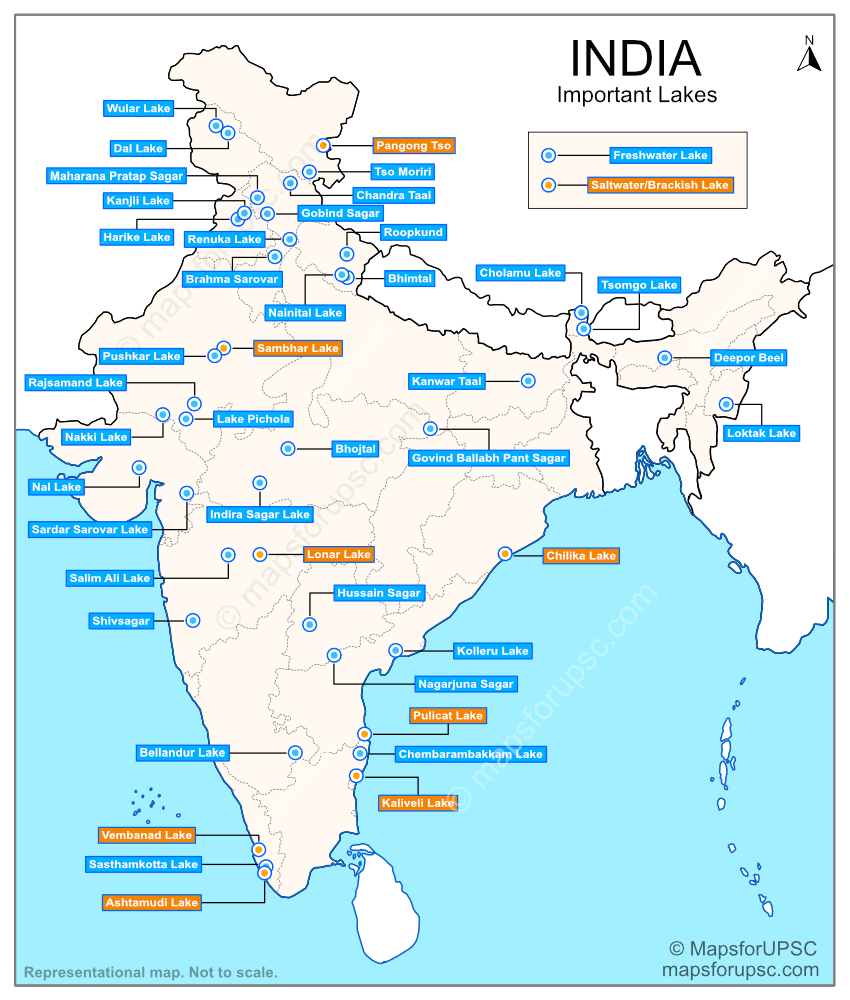Sambhar Lake: India’s Largest Saltwater Lake and Key Habitat for Migratory Birds
Why in the news?
Sambhar Lake is in the news due to recent deaths of migratory birds, raising environmental concerns and highlighting the need for stronger conservation efforts to protect its unique ecosystem and biodiversity.
Overview and Geography:
- Located in Rajasthan’s Nagaur and Jaipur districts, Sambhar Lake spans over 200 sq. km, making it India’s largest saltwater lake.
- The lake has an elliptical shape, with a length of5 km and a width varying from 3 km to 11 km, nestled amidst the Aravalli hills.
- The lake’s water is replenished by ephemeral streams, namely Mendha and Runpangarh, along with various smaller streams and surface runoff, creating a unique saline ecosystem.
Ecological Importance:
- Sambhar Lake, designated a Ramsar site in 1990, is a vital wintering ground for migratory birds, drawing species such as flamingos, pelicans, shelducks, and sandpipers.
- Significant bird species include Phoeniconaias minor and Phoenicopterus roseus, which enhance the ecological value of the area.
- The lake’s rich biodiversity supports numerous migratory birds during the winter, emphasising its role in regional biodiversity conservation.
Economic Value and Environmental Concerns:
- As a major salt production site, Sambhar Lake yields approximately 210,000 tonnes of salt annually, solidifying Rajasthan’s position among India’s leading salt producers.
- Recent instances of migratory bird deaths around the lake have raised alarm, underlining the need for conservation initiatives to protect this vital habitat.
- Conservation efforts are essential to preserve the lake’s ecological health, ensuring a safe environment for both wildlife and sustainable salt production.
Key Facts About India’s Major Lakes:
- Largest Freshwater Lake: Wular Lake, Jammu & Kashmir.
- Largest Saltwater Lake: Sambhar Lake, Rajasthan.
- Largest Brackish Water Lake: Chilika Lake, Odisha.
- Largest Artificial Lake: Govind Ballabh Pant Sagar, Uttar Pradesh.
- Longest Lake: Vembanad Lake, Kerala.
These lakes hold ecological, economic, and cultural significance, providing vital resources and habitats for various species and supporting local livelihoods.
Rajasthan Government’s Latest Plan:
- Introduce tourist spots, salt museum, and caravan park.
- Restart the “salt train” for salt transport.
- Combat illegal salt production and remove encroachments with police aid.
Sources Referred:
PIB, The Hindu, Indian Express, Hindustan Times




